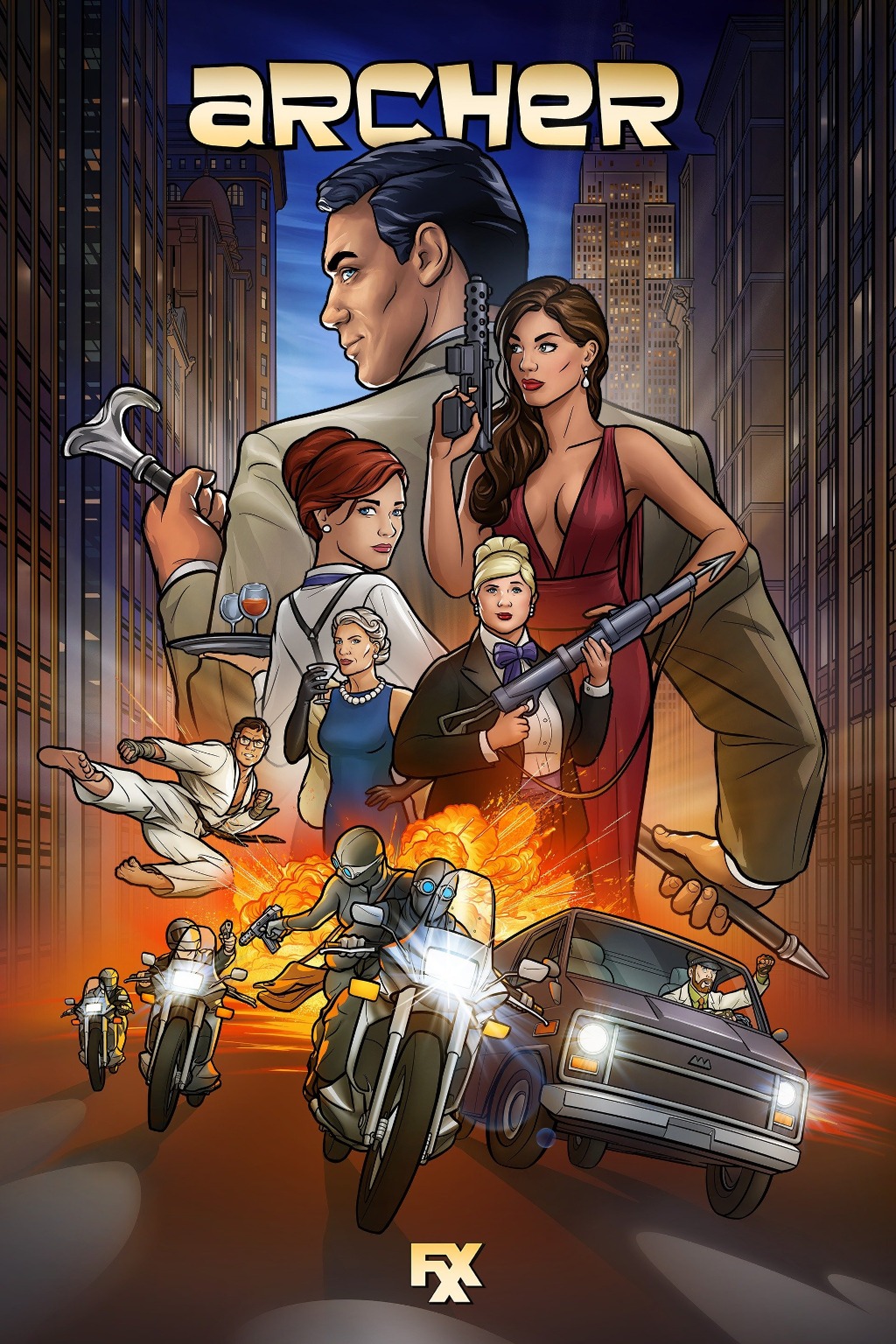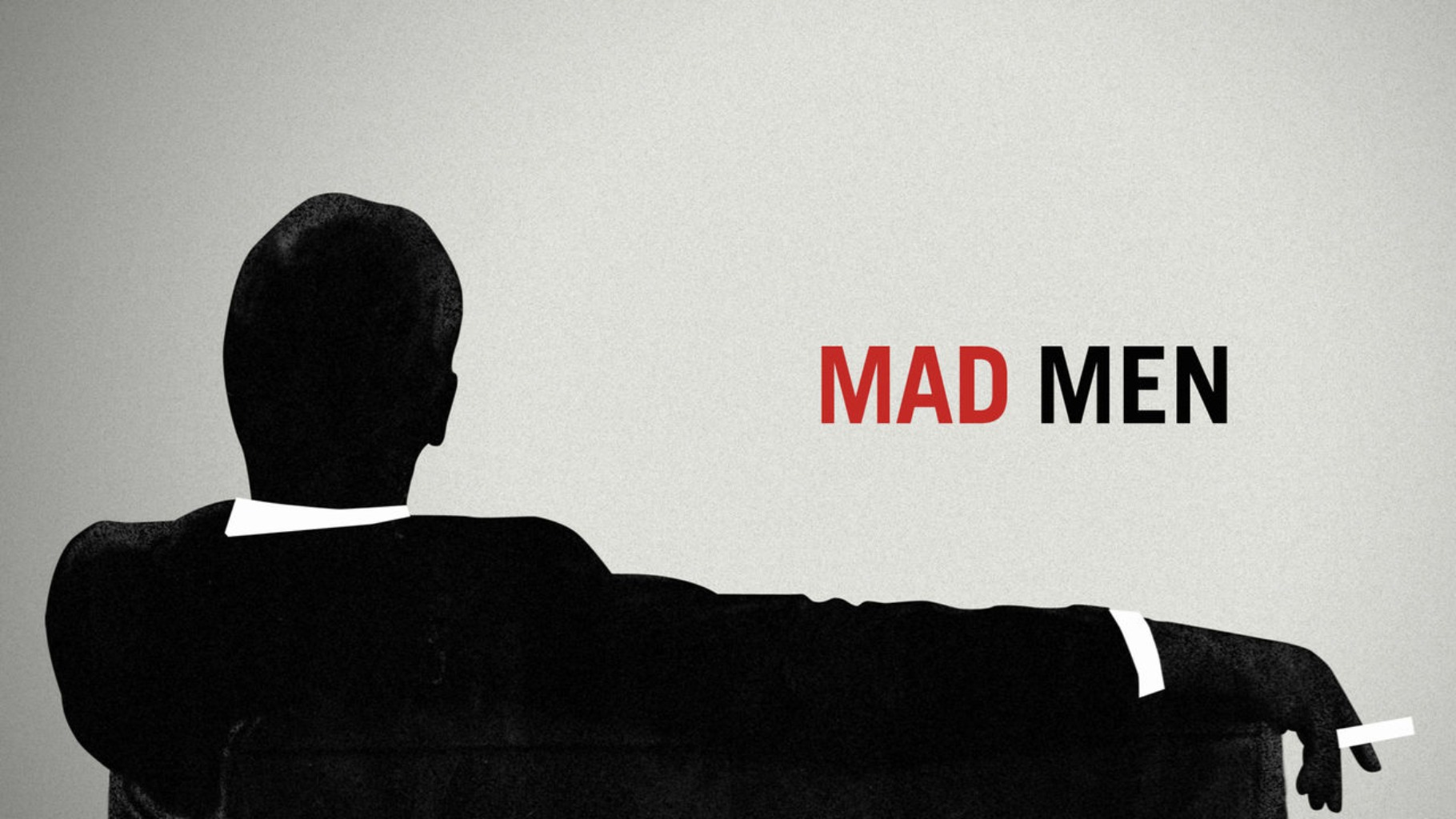I’ve done a few installments of this series of TV shows and movies you can watch to improve your writing, including some bonus posts about holiday and fairy tale movies (speaking of which, stay tuned for the results of our fairy tale retellings contest on May 1st). I decided it would be fun to break down another handful of TV shows to see what we can learn about writing from them. We are in a golden age of television right now, and they can offer plenty of great writing lessons.
Here are a few more shows you can watch to help make you a better writer.

1) Archer: Callbacks
Where to watch it: Hulu
Archer is a spy comedy that started in 2009 and follows the exploits of a dysfunctional intelligence agency. It’s centered on James Bond-esque Sterling Archer and several of his colleagues, including his mother Malory Archer who is also the head of the intelligence agency; Lana, an excellent agent and Archer’s ex-girlfriend; Dr. Krieger, the agency’s resident mad scientist, and more. It is a hilarious sendup of spy cliches and features a fantastic cast of characters.
One of the show’s best attributes is its callbacks. This refers to a joke that is referenced more than once in an episode or refers back to a gag in a previous episode. There are multiple callbacks throughout the show, including the “phrasing” joke and characters (often Malory) saying “who remembers” about some disturbing memory from their past. Another callback involves Archer singing the Kenny Loggins song “Danger Zone” to Lana in reference to her still having feelings for him.
Running jokes like these don’t just belong in TV shows. No matter what genre of book you’re writing, it can always be helpful to infuse some humor into them. It will make your characters more likable and add some levity to what might otherwise be a dark story.
Callbacks are a great way to reward your reader for paying attention. Inside jokes between characters will also make them seem more like real friends. This is a show where it can be helpful to listen to the dialogue without looking at the screen. That will make it easier to pick out the callbacks and figure out how to emulate them in your own writing.

2) Mad Men: Serious Ensemble
Where to watch it: Amazon Prime
Mad Men is a hit series that ran from 2007 until 2015, lasting seven seasons. It starts out at the fictional advertisement agency, Sterling Cooper. It centers on Don Draper, the creative director of Sterling Cooper, and his various colleagues at the advertising agency. The first episode defines “mad men” as “a term coined in the late 1950’s to describe the advertising executives of Madison Avenue”.
While suave, mysterious Don is certainly the main character of Mad Men, the show has a fantastic ensemble of characters. In addition to Don, the pilot introduces Peggy, an ambitious young woman from Brooklyn who is starting work as Don’s secretary; Joan, the vivacious and experienced secretary who shows Peggy around the office; Robert Sterling, a pal of Don’s and one of the heads of the agency, and more.
Throughout the show, the story delves deeply into several different characters in the show’s cast. I personally often found Don a difficult character to like but was so enthralled by Peggy that I continued to watch each week. I loved her storyline and got excited to follow it. The show is full of other fascinating women like Joan and Betty, Don’s wife.
It’s important in your stories that you focus on more than just your main character. Readers want a full cast of engaging characters to follow through the story. Mad Men is a great show to study how to have not just one, but an entire ensemble of interesting characters.

3) Party Down: Funny Ensemble
Where to watch it: Hulu
Say your story is less dramatic and more funny. Party Down is another show that features a wonderful ensemble, and this one is a comedy. It ran on Starz in 2009 and 2010. Party Down is the name of a catering company, and the show centers on Henry, a former actor who has returned to work as a bartender for Party Down after eight years away.
In addition to Henry, the first episode of the show introduces Ron, the overeager Team Manager; Roman, a sardonic screenwriter; Kyle, a womanizing struggling actor; Casey, a wisecracking comedian; and Constance, a sunny out of work actress. As I discussed about Friends in the first installment of this series, the members of this cast have a great rhythm to the jokes they crack.
Henry is a good character, but this show makes the viewer interested in each and every member of the Party Down team. In each episode, we learn about the projects each character is working on and get invested in the ups and downs of their careers. They’re not always the best people but they’re so funny that you can’t help but like them.
This show will teach you how to spend ample time on each character in your ensemble to make sure they feel real. This is also a great show to study for dialogue—the characters have a fantastic back and forth.
While it’s often helpful to take writing courses and seminars, there’s a whole lot you can learn by kicking back and switching on your favorite show. So grab some popcorn and some comfy pillows, and settle in for some substantial writing lessons!
Follow us on Facebook | Instagram | Twitter | Discord